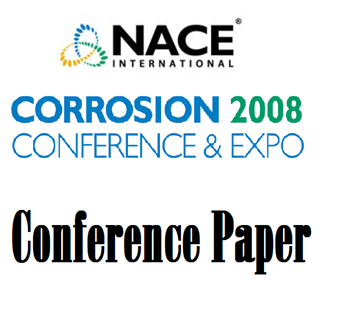Search
09169 Hydrogen Effects on A Grade 2205 Duplex Stainless Steel in Sulfide-Containing Caustic Solutions
Also Purchased
09175 Stress Corrosion Cracking of Heat Treated 2205 DSS in Caustic Solutions
Product Number:
51300-09175-SG
ISBN:
09175 2009 CP
Publication Date:
2009
$20.00
08194 Corrosion of Duplex Stainless Steels in High pH Caustic Solution
Product Number:
51300-08194-SG
ISBN:
08194 2008 CP
Publication Date:
2008
$20.00
00596 STRESS CORROSION CRACKING OF STAINLESS ALLOYS IN OXYGENATED CAUSTIC ENVIRONMENTS
Product Number:
51300-00596-SG
ISBN:
00596 2000 CP
$20.00




